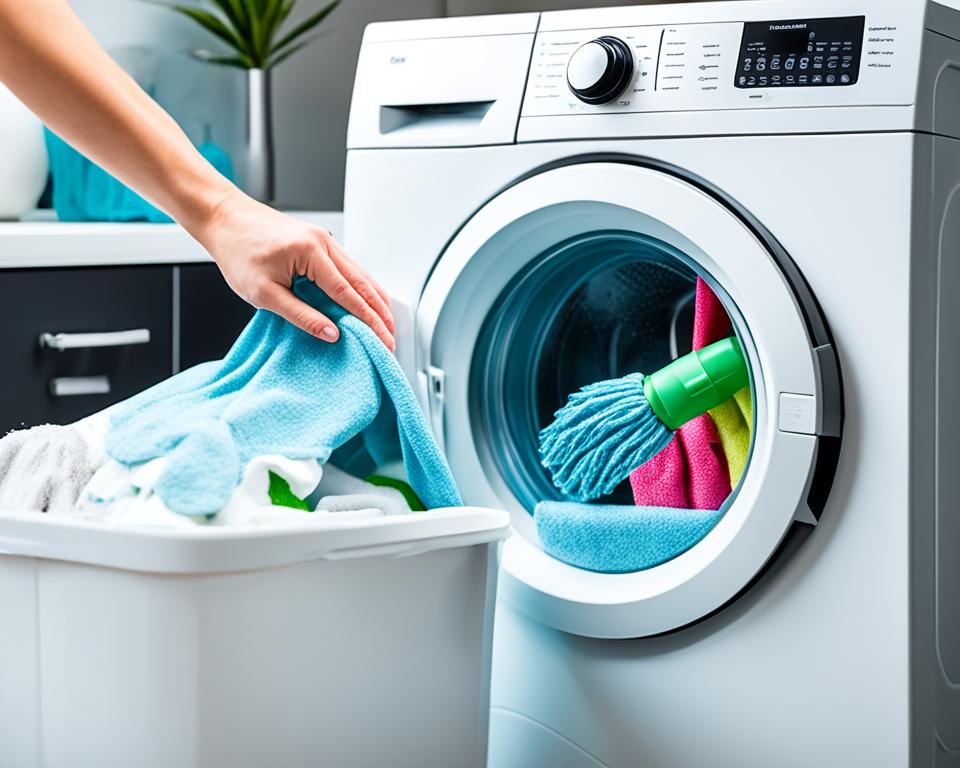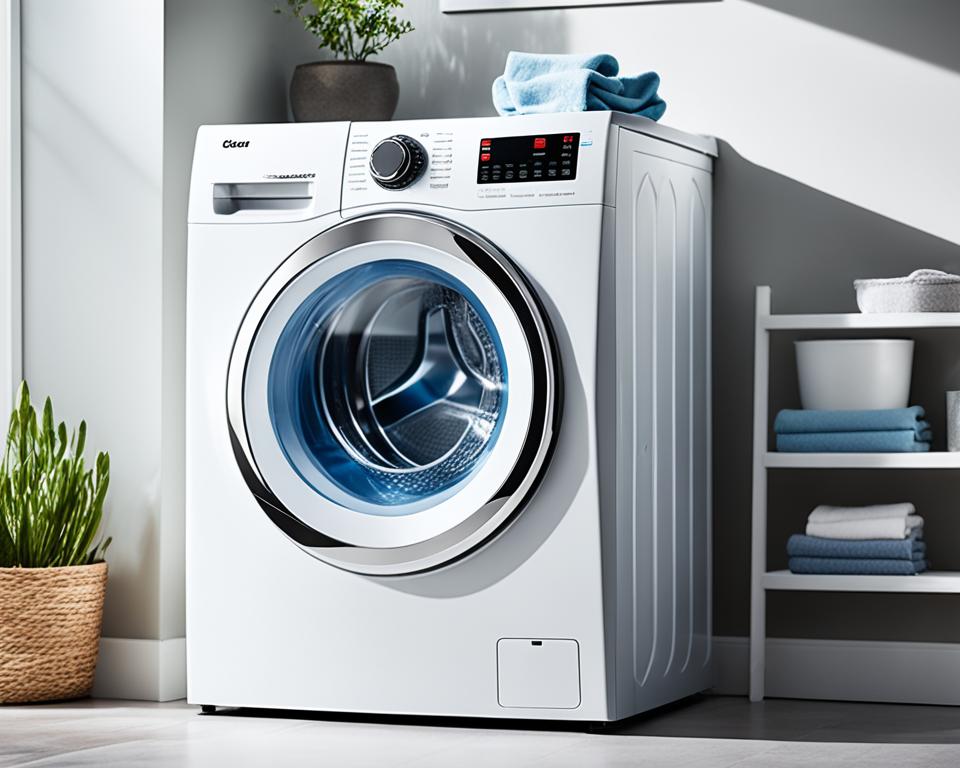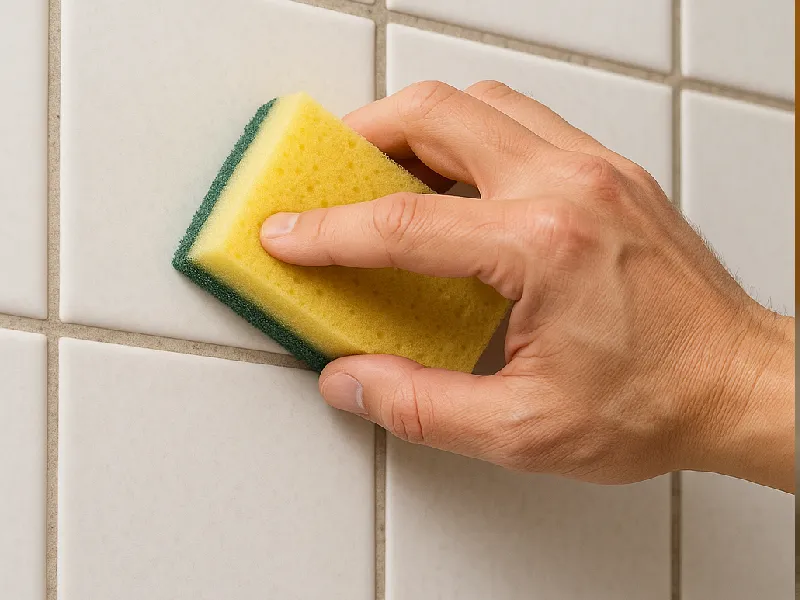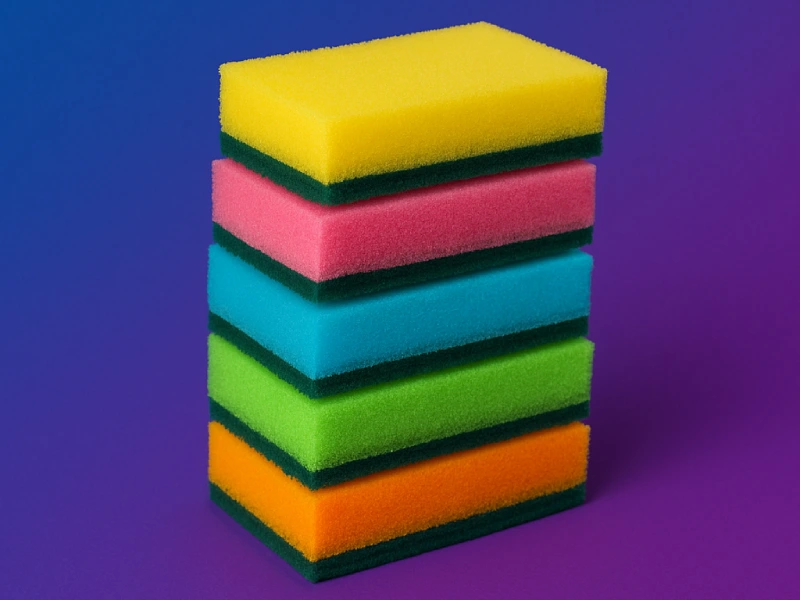Welcome to our guide on removing mold from your washing machine and achieving a clean, fresh-smelling laundry experience. A moldy washing machine not only affects the cleanliness of your clothes but can also create unpleasant odors. In this article, we will provide you with effective methods to remove mold from your washing machine and ensure that you have a clean washing machine that eliminates mold and leaves you with fresh-smelling laundry every time.
A mold-infested washing machine can be a result of various factors, which we will explore in more detail. Understanding the causes of mold in washing machines is crucial to preventing its recurrence. Factors such as a damp environment and stagnant water can contribute to mold growth. By addressing these causes, you can maintain a mold-free washing machine and enjoy a cleaner laundry experience.
Prevention is key when it comes to mold in washing machines. We will share practical prevention tips that will help you keep your washing machine mold-free. Regular cleaning routines, proper ventilation, and the use of vinegar as a natural cleaner are among the strategies we will discuss. By following these tips, you can reduce the chances of mold formation and ensure the longevity of your washing machine.
Understanding the Causes of Mold in Washing Machines
In order to effectively combat mold growth in washing machines, it is important to understand the underlying causes. Mold can thrive in certain conditions, particularly in a damp environment with stagnant water. Identifying these causes can help you take necessary steps to prevent mold from becoming a recurring problem in your washing machine.
One of the primary causes of mold in washing machines is a damp environment. When the interior of the machine remains moist for extended periods, it provides the perfect breeding ground for mold spores. This can occur if the washing machine is located in a basement or a room with high humidity levels.
Another contributing factor is stagnant water. When water pools or collects in certain areas of the washing machine, such as the rubber seal or detergent dispenser, it creates a stagnant environment where mold can thrive. Improper drainage or blockages in the machine’s water outlets can contribute to this issue.
Furthermore, leaving wet clothes in the washing machine for an extended period can also contribute to mold growth. The dampness and lack of ventilation create ideal conditions for mold to develop.
Understanding the causes of mold in washing machines allows you to address these issues proactively and minimize the risk of mold growth. By implementing preventive measures and adopting proper habits, you can maintain a mold-free washing machine and ensure clean, fresh-smelling laundry.

Common Causes of Mold in Washing Machines
| Cause | Description |
|---|---|
| Damp Environment | A humid or poorly ventilated location can create a conducive environment for mold growth. |
| Stagnant Water | Water accumulation in certain areas of the machine, such as the rubber seal or detergent dispenser, promotes mold growth. |
| Wet Clothes Left Inside | Leaving wet clothes in the machine for an extended period can create a damp environment ideal for mold development. |
By understanding the causes of mold growth in washing machines and taking appropriate preventive measures, you can keep your machine clean, mold-free, and maintain fresh-smelling laundry.
Prevention Tips to Keep Your Washing Machine Mold-Free
Preventing mold from forming in your washing machine is crucial for maintaining its efficiency and prolonging its lifespan. By implementing these practical tips, you can prevent mold growth and enjoy fresher, cleaner laundry.
Regular Cleaning Routines
Regularly cleaning your washing machine is essential to prevent mold and keep it running smoothly. Follow these steps:
- After each wash, wipe down the interior drum and door seal with a clean, dry cloth to remove any moisture.
- Once a month, run an empty cycle with hot water and a cup of vinegar to eliminate any buildup or residue.
- Regularly check and clean the detergent dispenser drawer to prevent residue accumulation.
By incorporating these cleaning routines into your laundry routine, you can effectively prevent mold growth and maintain a fresh-smelling washing machine.
Proper Ventilation
Proper ventilation is crucial for preventing mold in your washing machine. Ensure that:
- Your laundry room is well-ventilated, allowing air to circulate freely.
- Leave the washing machine door open after each wash to allow moisture to evaporate.
By promoting airflow and reducing moisture buildup, you can create an environment that discourages mold growth.
Using Vinegar as a Natural Cleaner
Vinegar is a natural cleaning agent that can effectively prevent mold growth in your washing machine. Here’s how you can use vinegar:
Mix equal parts of white vinegar and water in a spray bottle.
Spray the mixture inside the drum and wipe it down with a clean cloth.
Perform this cleaning routine once a month to keep your washing machine mold-free.
The acetic acid in vinegar helps kill mold spores and prevent them from proliferating, ensuring a hygienic laundry experience.
Avoiding Excess Detergent
Using excessive detergent can lead to residue buildup in your washing machine, creating an ideal environment for mold growth. Follow these guidelines:
- Refer to the manufacturer’s recommendations for the appropriate amount of detergent to use.
- Consider using detergent pods or pre-measured capsules for accurate dosing.
- Regularly clean the detergent dispenser to prevent residue accumulation.
By avoiding excess detergent, you can minimize the risk of mold and ensure optimal performance from your washing machine.
Summary
Preventing mold in your washing machine is crucial for maintaining cleanliness and efficiency. Incorporate regular cleaning routines, promote proper ventilation, use vinegar as a natural cleaner, and avoid excessive detergent to keep your washing machine mold-free. By following these prevention tips, you can enjoy fresh-smelling laundry and prolong the life of your appliance.
Steps to Remove Mold from Your Washing Machine
To effectively remove mold from your washing machine, follow these step-by-step instructions using common cleaning products:
- Gather your cleaning supplies: Before you begin, gather the necessary cleaning products, including bleach, baking soda, and scrubbing brushes or sponges. These ingredients will help eliminate mold and prevent its regrowth.
- Prepare a bleach solution: Mix 1 cup of bleach with 1 gallon of water in a bucket or basin. This solution will effectively kill the mold spores in your washing machine.
- Wipe down the interior: Dip a sponge or cloth into the bleach solution and thoroughly wipe down the interior of your washing machine, paying special attention to areas prone to mold growth, such as the detergent dispenser and door seals.
- Scrub stubborn mold stains: For stubborn mold stains, create a paste by mixing baking soda with water. Use a scrubbing brush or sponge to apply the paste to the affected areas and scrub vigorously.
- Leave the solution to sit: After cleaning, let the bleach solution sit in the washing machine for at least 30 minutes to ensure thorough disinfection.
- Run a cleaning cycle: Once the solution has had time to work, run a hot water cycle in your washing machine to rinse away any remaining mold spores and cleaning residue.
Remember to always follow the manufacturer’s instructions and safety guidelines when using cleaning products. Additionally, consider wearing gloves and ensuring proper ventilation while cleaning your washing machine.
Regularly performing these steps will help keep your washing machine mold-free and ensure clean, fresh-smelling laundry every time you use it.

Maintaining a Mold-Free Washing Machine
Keeping your washing machine mold-free requires regular maintenance and good cleaning practices. By following these essential practices, you can extend the lifespan of your machine and ensure a fresh and hygienic laundry experience.
Regular Inspections
Performing regular inspections of your washing machine is crucial in maintaining a mold-free environment. Check the drum, detergent dispenser, and rubber seal for any signs of mold or mildew growth. If you notice any, take immediate action to clean it thoroughly.
Here are a few inspection tips:
- Inspect the rubber seal after every wash. Wipe it down with a clean cloth to remove any leftover moisture and detergent residue.
- Check the detergent dispenser for any mold or residue buildup. Remove any debris and clean it with warm soapy water.
By incorporating regular inspections into your laundry routine, you can catch any mold growth early on and prevent it from spreading.
Appropriate Detergent Selection
Choosing the right detergent is essential in preventing mold growth in your washing machine. Opt for high-quality detergents that are specifically designed for front-loading or high-efficiency (HE) machines.
These detergents are formulated to be low-sudsing, preventing excess residues from accumulating in the machine. Excess suds and residues can create a breeding ground for mold and mildew.
Wiping the Rubber Seal
The rubber seal in your washing machine is a common area where mold can thrive. After each use, take a few moments to wipe down the rubber seal with a damp cloth to remove any moisture and detergent residues.
This simple step can go a long way in preventing mold growth and ensuring a clean and odor-free machine.
To summarize, maintaining a mold-free washing machine involves regular inspections, using the appropriate detergent, and wiping down the rubber seal after each use. By incorporating these practices into your laundry routine, you can ensure a clean and hygienic washing machine for years to come.

Conclusion
In conclusion, following the tips and methods outlined in this article will help you effectively eliminate mold from your washing machine and ensure a clean, fresh-smelling laundry experience every time.
By understanding the causes of mold growth, such as a damp environment and stagnant water, you can take proactive measures to prevent mold from forming in the first place.
Regular cleaning routines, proper ventilation, and the use of vinegar as a natural cleaner are essential in keeping your washing machine mold-free. Additionally, our step-by-step guide to removing mold using cleaning products like bleach and baking soda will help you restore your machine to its pristine condition.
Remember, maintaining a mold-free washing machine involves regular inspections, using appropriate detergent, and wiping the rubber seal after each use. By incorporating these practices into your laundry routine, you can bid farewell to unsightly mold and say hello to a mold-free washing machine!








